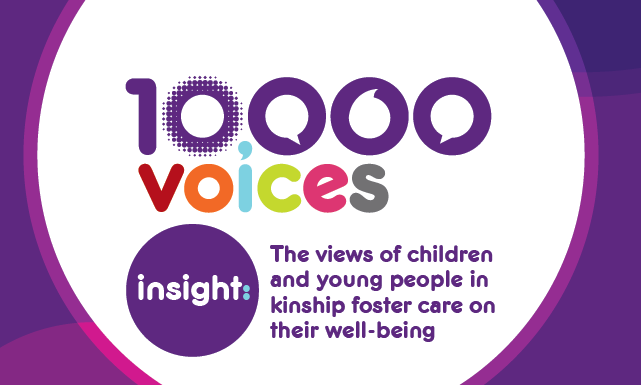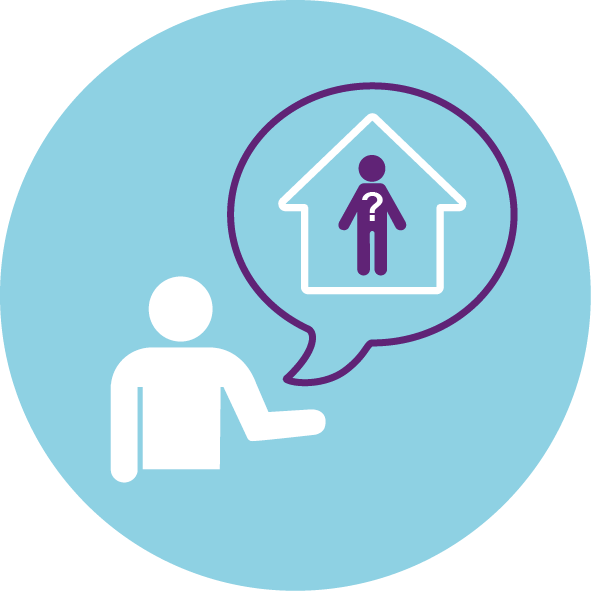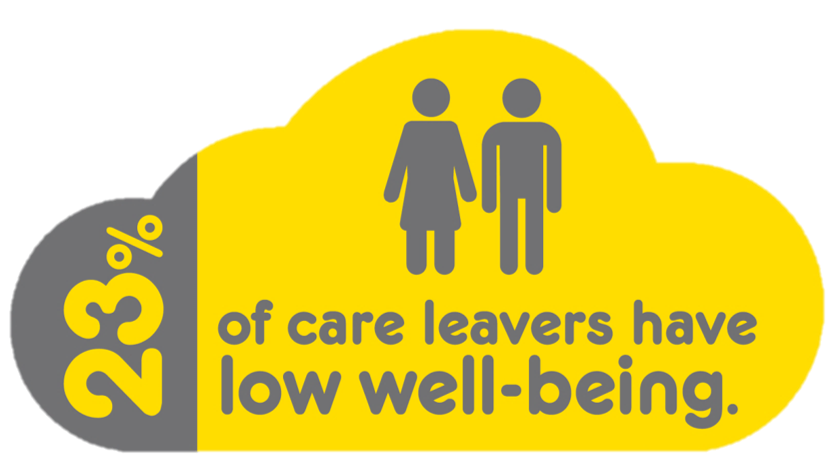This paper highlights what our extensive experience of engaging care experienced children and young people has taught us about what needs to be in place for decision makers in children’s social care (and government) to hear and act on the voices of children and young people and what that may mean for an outcomes framework.
In Spring 2023 the Department for Education consulted on their latest strategy for children’s social care Stable Homes, Built on Love. As part of our response to the strategy Coram Voice produced a paper to highlight how we felt youth voice needed to be embedded in Children’s social care. It focuses on how children in care and care leavers should be heard and sets out key recommendations about how youth voice can practically be embedded at all levels of decision making – individual (child’s own care), organisational (local authority and partners) and system (National Government).
“There’s so many things that need to change around the foster care system. It is so important that the government, the people who have the power to make a difference, take some time to listen to children and young people who have experienced being in the care system. To them, this is just a job, but this is our lives. They have so much power to change the way things are.” Chloe (Care-experienced A National Voice Ambassador and Chair of ANV)
In this paper we set out specific actions that should be taken to realise youth voice, in particular we make three key recommendations to inform the government’s implementation strategy and national framework:
1. Create a new mission to embed youth voice by putting in place the structures and systems to make the right to be heard a reality for all children and young people.
2. Focus more on making life better for children and young people by making well-being, as defined by children and young people themselves, a key pillar for children’s social care.
3. Support children and young people to be heard and safeguard their rights by giving them the information about their rights and providing opt out independent advocacy for all children and young people throughout and beyond the care system (including in child protection, kinship care, care leavers etc.)
Download our Embedding youth voice in Children’s Social Care report

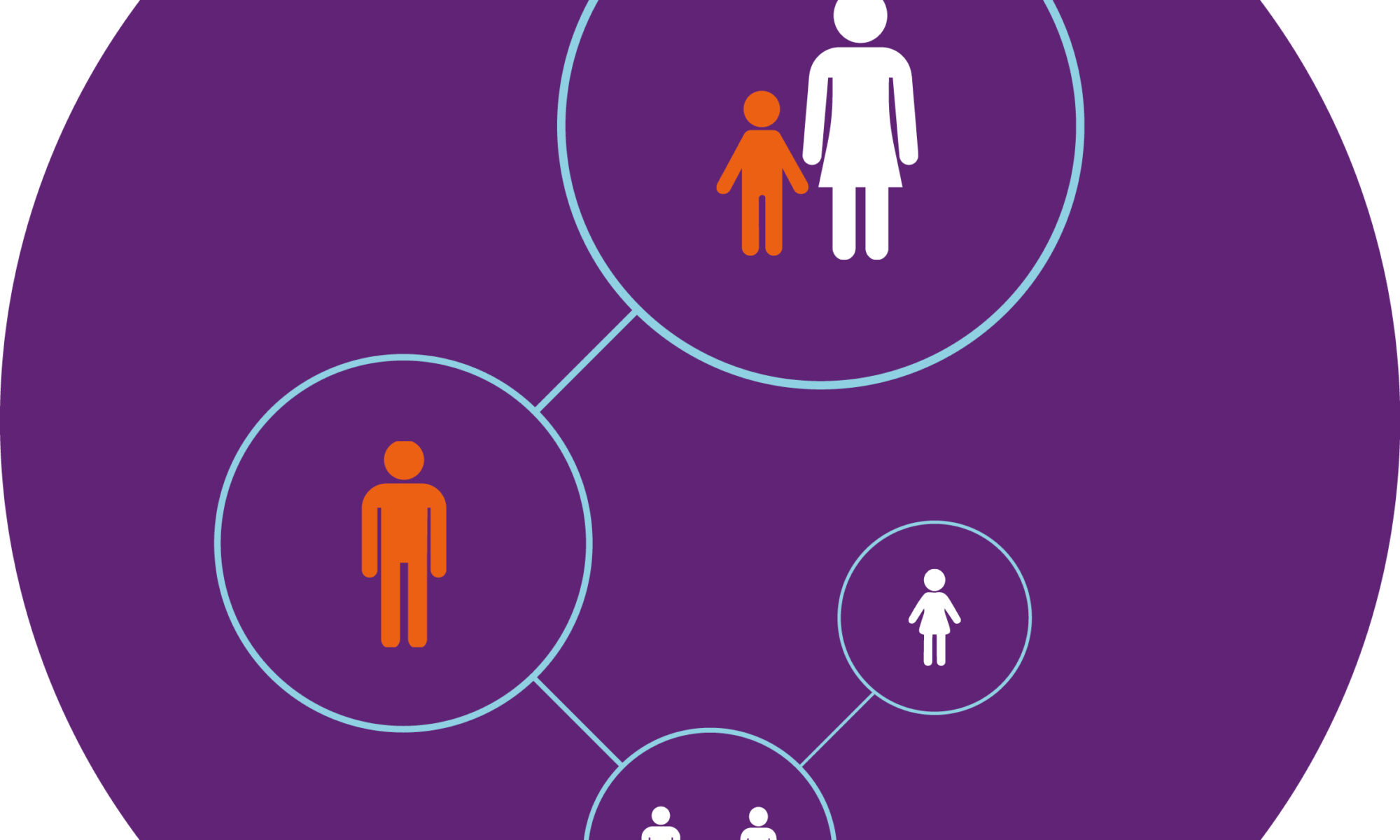
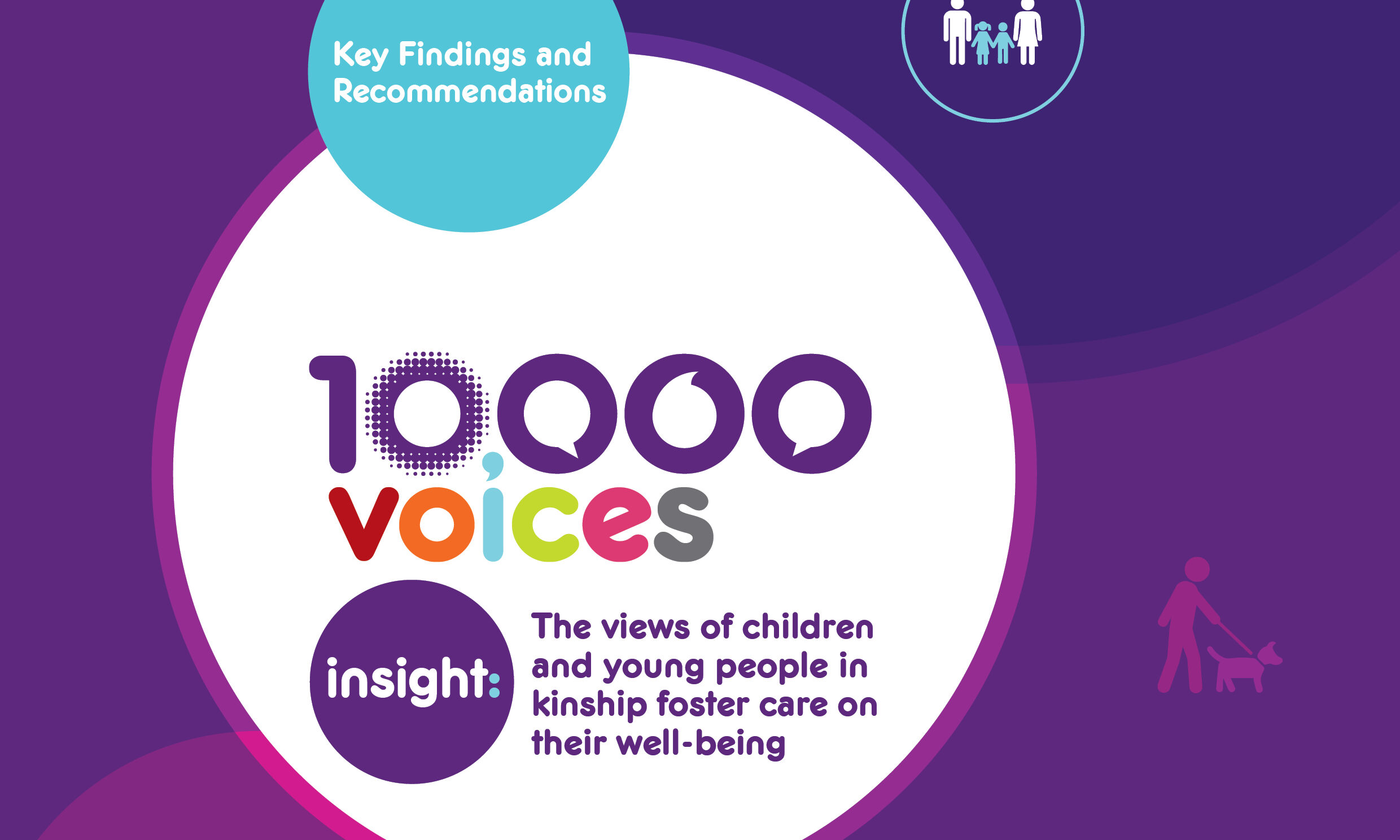
 Most reported moderate to high well-being. About one in nine young people (11-18yrs) rated themselves as having low well-being in comparison with one in seven in unrelated foster care.
Most reported moderate to high well-being. About one in nine young people (11-18yrs) rated themselves as having low well-being in comparison with one in seven in unrelated foster care.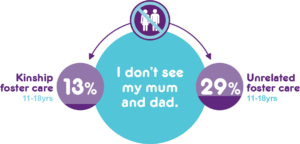 Larger proportions in kinship foster care compared with those in unrelated foster care had contact with family members and felt their contact arrangements were ‘just right’.
Larger proportions in kinship foster care compared with those in unrelated foster care had contact with family members and felt their contact arrangements were ‘just right’.
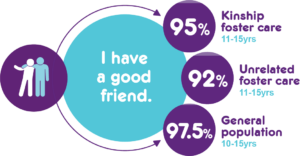 A higher proportion reported that they had a good friend, compared with those in unrelated foster care. But, fewer had opportunities to have a pet.
A higher proportion reported that they had a good friend, compared with those in unrelated foster care. But, fewer had opportunities to have a pet.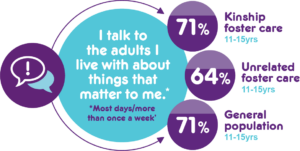
 In comparison with peers of the same age in the general population, a larger percentage of those in kinship care liked school ‘a lot/a bit’ and felt their carers were interested in what they did at school.
In comparison with peers of the same age in the general population, a larger percentage of those in kinship care liked school ‘a lot/a bit’ and felt their carers were interested in what they did at school.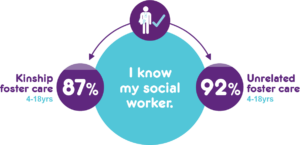 While there were examples of very good relationships with social workers, relationships with social workers were complicated. Some felt the worker was only visiting to support their carer, and some did not know they had a social worker.
While there were examples of very good relationships with social workers, relationships with social workers were complicated. Some felt the worker was only visiting to support their carer, and some did not know they had a social worker.